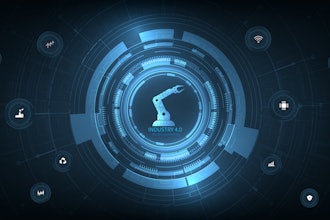The topic of 3D printing has been synonymous with manufacturing over the past few years, becoming a key part of a handful of product markets. A recent report forecasts that the 3D printing market will increase ten-fold to $8 billion by 2025. Analysis released in March from the Manufacturers Alliance for Productivity and Innovation Foundation said 3D printing is already beginning to shorten supply chains in a number of industrial sectors and improve both cost and efficiency.
But what are the implications specifically in industrial distribution?
From what I can tell, the general vibe of the industrial distribution marketplace is that '3D printing may become a factor, but is still years away.'
At the Industrial Supply Association Convention held April 25-27 in Cleveland, I sat in on ISA's Small Distributors Forum, a small MRO business session that delivered a wealth of market insight, targeted for small industrial distributors. At the end of the ISA presentation, a series of questions were posed to a panel of executives in the industry:
- Sandy Johns, Channel Manager at Brady Corporation (Milwaukee)
- Peter Madsen, President, Madsen and Howell (Perth Amboy, NJ)
- Phil Hanson, President, C.H. Hanson (Naperville, IL)
- Jon Eames, President, N.H. Bragg (Bangor, ME)
One of the questions given to the panel was "What should distributors do – if anything – to prepare for the impact of 3D printing?" Their mixture of responses was one of the most interesting portions of the entire session, and revealed a difference of opinions in the market.
On one hand, Eames and Madsen were the skeptics of 3D printing's immediate impact on industrial distribution.
"I don't see it as a real threat," said Eames, short and sweet.
"It's a threat, but still three years away on the horizon," Madsen added. "But it is the future. It is excellent for prototypes. They'll figure out how to make real products real soon."
The argument could be made that 'real soon' is right now. At the start of 2015, Print-a-Part 3D began offering complete sets of bolts, screws, nuts, washers, and other industrial fasteners as ready-to-print STL (STereoLithography) files. Desktop fused deposition modeling manufacturer Airwolf 3D has recently begun printing bearings.
The ongoing challenge, however, is materials. Both Print-a-Part 3D and Airwolf 3D's products are plastic-based. Plastic may work for consumers looking for a quick fastener to fix a desk or broken toy, but for applications in machinery or automotive, there isn't much use for a plastic bolt when you go go to the hardware store and buy a bag of steel for $2.
That being said, progress is being made on the materials front in 3D printing. At the start of the year, Sandvik, one of the world's largest producers of metal cutting tools, opened a brand-new 3D printing research and development center in Sandviken, a small town north of Stockholm. The team there will unify 3-D initiatives across the business and examine how the technology can be used in its production of everything from mining drill rigs to fuel tubes for nuclear power plants
In Japan, the Kariwa Plant started 3D printing control valves in 2013, and now, seasoned metalworkers can 3D print metal valves with an accuracy of up to 100 times greater than the industry standard of within .1 millimeters. The design process has become so intricate that it has minimized the need for finishing after printing, which greatly speeds up production.
Opposite of Eames and Madsen at the ISA forum, Hanson and forum host Bill McCleave were much more certain about 3D printing's application in industrial distribution. They suggest that distributors at least get their foot in the door in the near future so that when 3D printing is more practical in the market, those distributors can hit the ground running.
"It's absolutely going to change everything," Hanson said. "I think its going to have as big of impact on distribution and manufacturing as the Internet itself. Cutting tools used to be a huge requirement for prototypes, etc. It's not that anymore. It's an area of huge opportunity. We don't know much about it, but we know it is the future. If I can find a small distributor who has some expertise in it and is interested in partnering with it, that's appealing. I think we're three years away from bringing it into our facility."
"A lot of people said 'this is a toy, it has no place in our business,' about the computer. It rocked the community," McCleave added. "The Internet has rocked the manufacturing/distribution community. If distributors don't participate, one day they'll look up and say, 'what happened?' It's certainly worth considering."
At the very least, it seems worthwhile for distributors to research which of their suppliers, if any, are considering investing in 3D printing.
What do you think? What level of impact will 3D printing have on industrial distribution? Feel free to share your thoughts below.






















